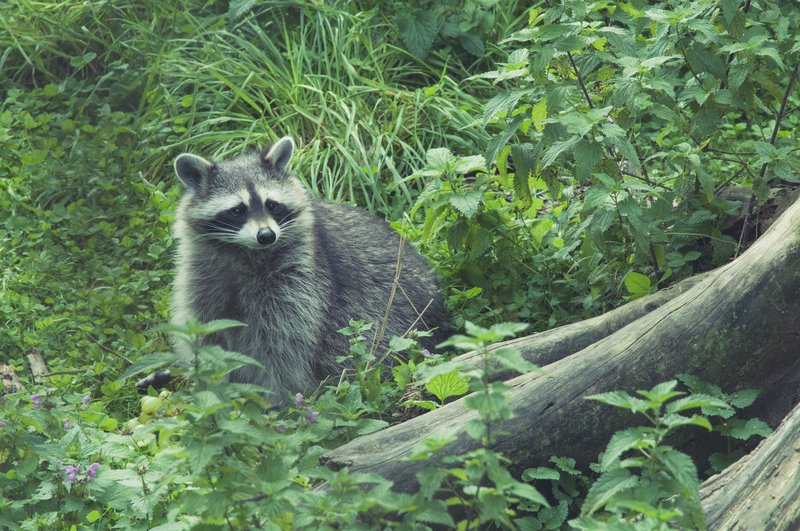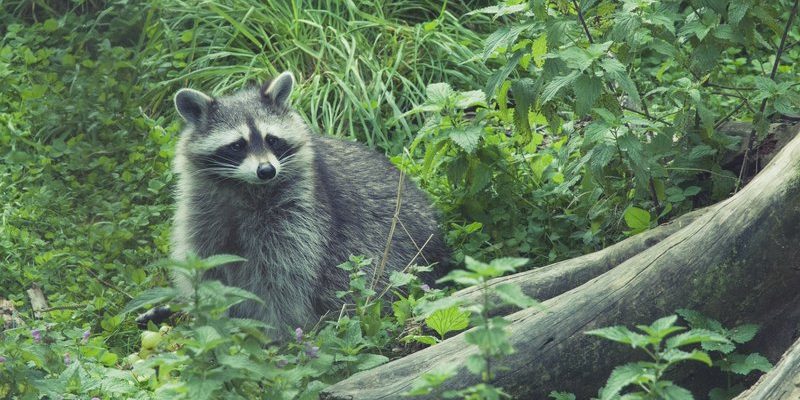
When we think about survival, we often picture the bravest animals in the wild, like lions or bears. But raccoons deserve a spot in that conversation too. Their intelligence, dexterity, and adaptability allow them to not only survive but also thrive in environments that can be less than welcoming. Let’s uncover how these clever critters overcome obstacles and make even the harshest places feel like home.
The Clever Problem-Solvers of the Animal Kingdom
Raccoons are often hailed as the geniuses of the animal world. Their problem-solving skills are impressive, especially when it comes to finding food. Imagine being hungry and having to figure out how to open a container or manipulate a latch, just like a toddler trying to get into a cookie jar. Raccoons have highly sensitive front paws that can feel their way through tight spaces, which is essential for cracking open tough shells or accessing hidden food sources.
Interestingly, their cognitive abilities shine in urban areas. Raccoons have been observed learning from each other, passing down tricks like opening garbage bins or navigating complex terrains. If you’ve ever watched a raccoon nimbly climb a fence or scamper across a roof, you know they excel at adapting their skills to new challenges. It’s almost like they have a little manual titled “Survival 101,” written in invisible ink just for them.
So, why does this matter? Well, it shows how raccoons handle the pressures of living in a world where humans often encroach on their habitats. They find innovative solutions to problems, ensuring they can always get their next meal—even if it’s from the neighbor’s compost bin.
Multi-Food Diet: A Key to Survival
One of the biggest advantages raccoons have is their diverse diet. These little foragers will eat just about anything. From fruits and nuts to insects and small animals, they’re not picky. This ability to adapt their diet based on what’s available makes them incredibly resilient.
In urban settings, raccoons often indulge in leftovers from restaurants, garbage cans, or even pet food left outside. It’s like a never-ending buffet for them! This dietary flexibility allows them to thrive where food sources are unpredictable. They can switch from scavenging to hunting with ease, depending on what they find.
Here’s something surprising: raccoons even have a knack for differentiating between safe and dangerous foods. They might take a nibble of something new, but they’re cautious enough to avoid potential toxins. This instinct helps them navigate a world where not everything is created equal, ensuring they stay healthy while indulging their taste buds.
Adaptable Habitats: Where Raccoons Call Home
Raccoons are truly resourceful when it comes to finding shelter. They can adapt to various habitats, from wooded areas to bustling cities. Think of them as the ultimate urban survivalists, turning attics, basements, and even under porches into cozy dens.
In cities, you might find them nesting in tree hollows or abandoned buildings. These locations provide safety from predators and easy access to food. Just like a smart city dweller finds ways to make a tiny apartment feel spacious, raccoons cleverly create comfortable living spaces in less-than-ideal conditions.
Their adaptability also extends to coping with seasonal changes. In colder climates, raccoons know when to hunker down and conserve energy. They’ll enter a state called torpor, where their metabolism slows down, helping them survive when food is scarce. This behavior showcases their ability to attune themselves to nature’s rhythms, just like we bundle up in winter, waiting for the first signs of spring.
Community Living: The Raccoon Way
You might think of raccoons as solitary animals, but they can also be very social. They often form small, loose-knit communities where they help each other out. It reminds me of how friends pool resources to get through tough times. They might share food sources or alert each other to dangers, like a neighbor warning you about a suspicious character in the area.
Living in a community can enhance their survival odds, especially in urban environments. When one raccoon discovers a source of food, others are quick to join. This collaboration allows them to thrive and gives them a much better chance of avoiding threats, like predators or humans. It’s all about teamwork in the raccoon world.
You might be wondering how this impacts their overall survival skills. Well, communal living makes it easier for raccoons to navigate their environments. They learn from each other’s experiences, adapting their behavior to become more efficient foragers, climbers, and shelter seekers. Just imagine the confidence boost they get from knowing their buddies have their backs!
Physical Adaptations: Nature’s Handiness
Raccoons have some pretty remarkable physical adaptations that help them adapt to challenging environments. One standout feature is their agile front paws, which are incredibly dexterous. If you’ve ever seen a raccoon wash its food, you’ll appreciate how these paws allow them to manipulate objects like a pro. They can even open containers or doors, showcasing remarkable problem-solving skills.
Their fur also plays a role in survival. It keeps them warm during colder months and helps camouflage them in various environments. This ability to blend in can be a game changer, especially when it comes to avoiding predators or sneaking up on prey. It’s like wearing the perfect outfit that helps you fit in at any gathering.
Let’s not forget their keen sense of touch and highly developed hearing. This helps them navigate the world, even in the dark. They rely on their whiskers to sense changes in their surroundings, almost like having built-in sensors. With all these features, it’s no surprise they can thrive in a wide range of habitats.
The Importance of Intelligence: Learning and Adaptation
Raccoons are often praised for their intelligence, which plays a crucial role in their survival. They can learn quickly, thanks to their adaptable brains. This adaptability allows them to solve complex problems and navigate challenges in their environment. It’s akin to how we learn to use new technology—sometimes, it just takes a little trial and error.
For instance, researchers have found that raccoons can remember the solutions to tasks for up to three years! That’s pretty impressive for a small creature. This ability helps them recognize patterns and develop strategies for finding food or evading danger, especially in urban landscapes where the stakes are high.
Their natural curiosity also drives them to explore and learn. Imagine a kid poking around a backyard for hidden treasures. Raccoons do the same, constantly searching for new food sources or shelter options. This exploratory behavior not only keeps them fed but also hones their survival skills, ensuring they’re ready for whatever challenges come their way.
In summary, raccoons are remarkable survivors, equipped with unique adaptations that allow them to thrive in a variety of environments, from forests to bustling cities. Their problem-solving skills, diverse diets, communal living, and physical traits all contribute to their ability to navigate harsh conditions. It’s a bit like watching a clever friend tackle a tough challenge—every step is a testament to their resilience.
So next time you spot a raccoon, take a moment to appreciate the incredible journey they’ve taken to get there. Whether they’re rummaging through trash bins or climbing trees, these little bandits are a testament to nature’s ingenuity. They remind us that no matter how tough the environment may be, with a little creativity and adaptability, survival is always within reach.

